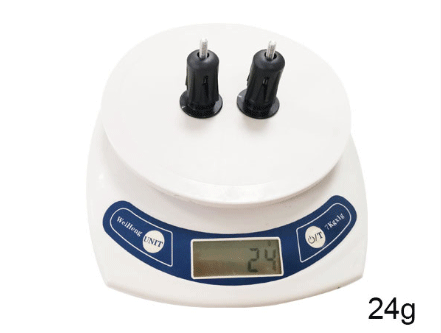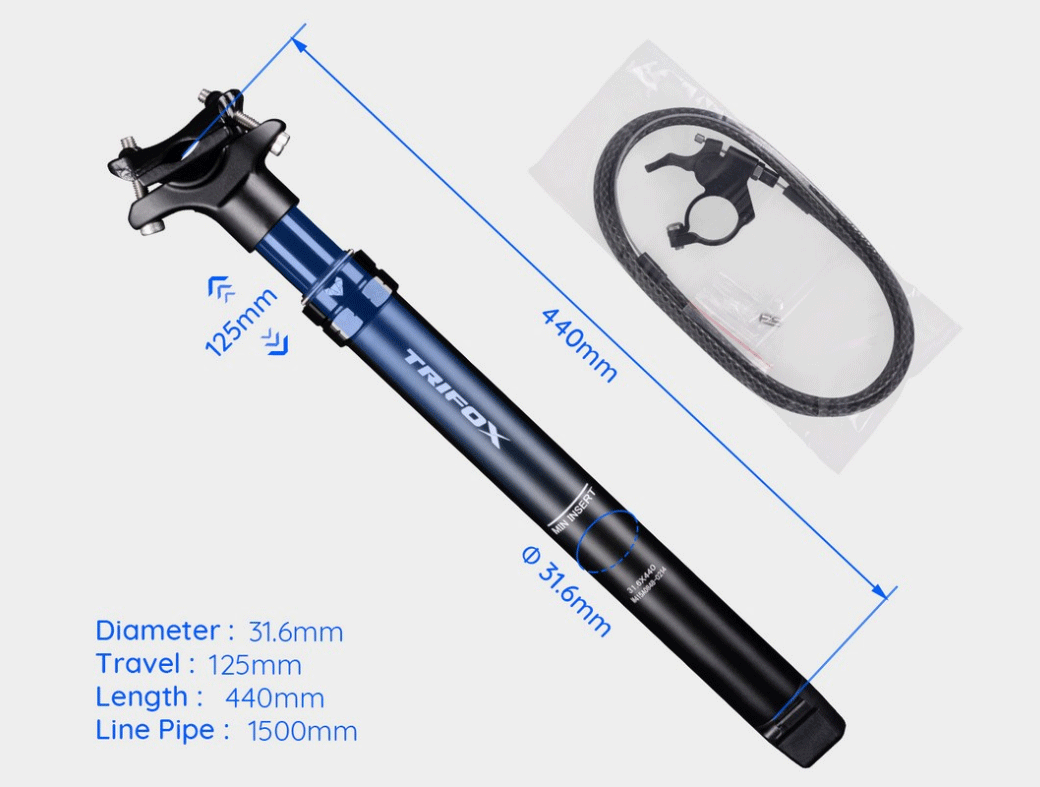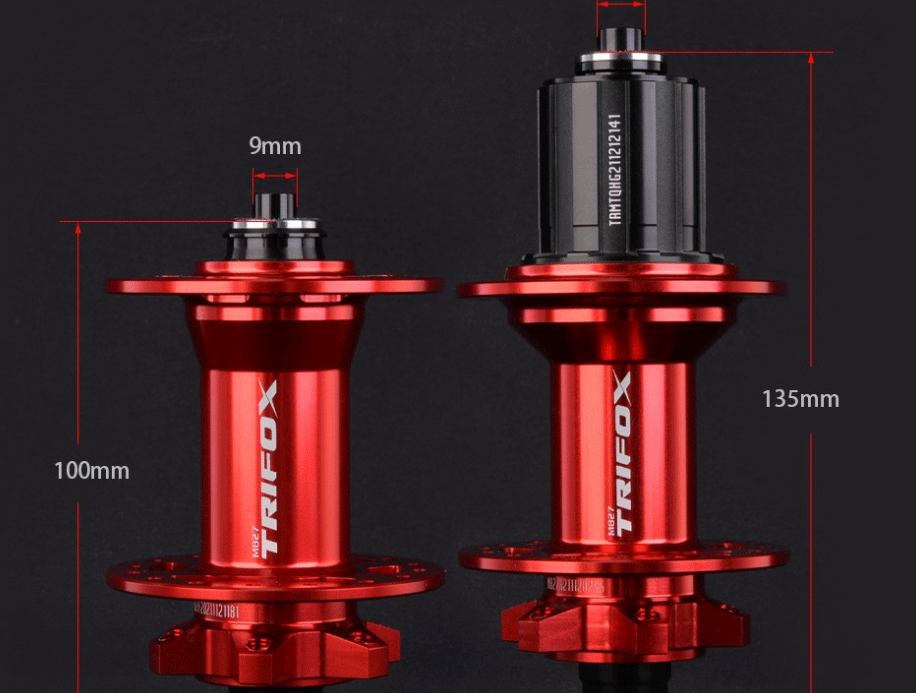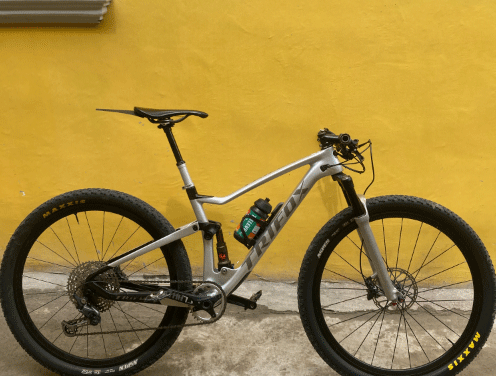
As an avid cyclist, you know that every little detail of your bike matters. One such detail that often gets overlooked is the handlebar end caps. These small but crucial components safeguard your handlebars against wear and tear, and also play a role in enhancing your bike's aesthetics. In this blog post, we'll take a closer look at handlebar end caps, their importance, and how to choose the right ones for your bike. Firstly, let's understand why handlebar end caps are important. These caps prevent dust, debris, and moisture from entering your handlebars, which can potentially cause damage to the internal components. Handlebar end caps also serve as a buffer in case of accidents, protecting your bike from scrapes and dents. Additionally, handlebar end caps can elevate the overall look of your bike. There are myriad end cap design options that can add character and personalization to your ride. When it comes to choosing the right handlebar end caps, there are various factors to consider. The first is the type of handlebars you have. End caps come in different shapes and sizes to fit different handlebar types, including drop bars, flat bars, and riser bars. It's crucial to choose the end caps that are designed for your specific handlebar type to ensure a snug fit. The material of your handlebar end caps is another important aspect to consider. While there are plastic end caps available, metal end caps tend to offer better durability and longevity. Metal end caps are often made from aluminum or alloy and can withstand wear and tear over time, making them a better investment. One example of a high-quality handlebar end cap is the Trifox Bicycle Handlebar End Stoppers. These end caps offer a firm and safe mount with their expansion PP base, while the alloy mainframe and CNC-machined finish offer both durability and an attractive look. The Trifox end caps are also lightweight, weighing only 24 grams per pair, so they won't add unnecessary weight to your ride. They're easy to install, so you don't need to worry about any complicated installation processes. Handlebar end caps may seem like a small and insignificant bicycle component, but they play a crucial role in protecting your handlebars and adding a touch of personalization to your ride. When choosing end caps, make sure to consider the type of handlebars you have and invest in high-quality metal end caps that will last you a long time. With the Trifox Bicycle Handlebar End Stoppers, you can rest assured that you're getting a durable and stylish option that will enhance your cycling experience.

As an avid cyclist, it's important to stay hydrated on long rides. However, having a water bottle bouncing around in your backpack or attached to your handlebars can be both distracting and potentially dangerous. That's where the Trifox bicycle Water Bottle Holder comes in. This lightweight carbon fiber holder securely attaches to your bike frame, so you can easily reach for a refreshing sip of water whenever you need it. Firstly, let's talk about the Trifox Bike Water Bottle Holder's material. Made from high-quality carbon fiber T800, this holder is lightweight yet strong and durable. It can withstand the bumps and jolts of even the toughest mountain bike trails, and won't weigh you down during long rides. Plus, its sleek design makes it a stylish addition to any bike frame. But what about compatibility? The Trifox Bike Water Bottle Holder is designed to fit a variety of bike frames, including mountain bikes, road bikes, and gravel bikes. Its max diameter of 14 * 7.5cm / 5.5 * 3.0in (L * D) means it can hold just about any standard water bottle. And with its simple installation process, you can easily attach the holder to your bike frame and be on your way in no time. Now, let's talk about colors. The Trifox Bike Water Bottle Holder comes in four eye-catching colors: red, silver, green, and gray. Whether you want your bike to make a bold statement or blend in more subtly, there's a color to suit your style. And with its sleek design and high-quality material, you can be sure that this holder will look great on any bike frame. But what about weight? No one wants to add unnecessary weight to their bike, especially if they're planning on long rides. Luckily, the Trifox Bike Water Bottle Holder is incredibly lightweight, weighing in at just 28g ± 2g. This means you can stay hydrated without feeling weighed down, even on the longest rides. Finally, let's talk about convenience. The Trifox Bike Water Bottle Holder allows you to easily access your water bottle while on the go, without the risk of it falling out of your backpack or jostling around on your handlebars. This means you can ride with confidence, knowing that you can quickly and easily hydrate whenever you need to. Conclusion: The Trifox Bike Water Bottle Holder is a must-have accessory for any cyclist. Its sleek design, high-quality material, and compatibility with a variety of bike frames make it a versatile and stylish addition to any ride. And with its lightweight construction and convenient access to water, you can stay hydrated and focused on the road ahead. So next time you hit the trails or the open road, make sure you have the Trifox Bicycle Water Bottle Holder by your side (or, more accurately, your bike frame).

When it comes to cycling, bike enthusiasts take every possible step to make their ride smooth and comfortable. Be it the frame, wheels, or suspension of the bike, the rider always aims for the best. However, the one component that cyclists often overlook is the handlebars. Bike handlebars play a crucial role in ensuring rider comfort, positioning, and control. With advancements in technology, there are several types of cycle handlebars available in the market that cater to different styles of riding. 1. Mountain Bike Handlebars Mountain bike handlebars can be classified into two types: riser and flat. Riser handlebars have a curved shape, providing extra height to the rider's grip. These bars are ideal for riders who prefer an upright riding position, allowing them to observe their surroundings while riding. Flat handlebars, as the name suggests, are straight bars without any curvature. They are best suited for riders who prefer a more aerodynamic riding position. Flat handlebars provide a better grip that allows riders to maneuver the bike easily. 2. Road Bike Handlebars Drop bars are the most common type of handlebars used in road bikes. Drop bars have a distinctive shape that descends downwards, providing a variety of hand positions to the rider. Drop bars are ideal for long rides as they offer multiple hand positions, allowing riders to change their grip and relieve pressure on their palms. The aero drop bar, a variation of the drop bar, has a flat top section that allows riders to rest their hands, minimizing wind resistance. 3. Carbon Fiber Integrated Handlebars Carbon fiber integrated handlebars are a popular choice among road and triathlon riders. These handlebars have an aerodynamic design that minimizes wind resistance and enhances overall bike performance. Integrated handlebars have the shifters, brakes, and cables built into the bar, giving the bike a clean and streamlined look. 4. Carbon Fiber Riser Handlebars Carbon fiber riser handlebars are similar to mountain bike riser handlebars but are made up of carbon fiber. Riser handlebars have a shorter reach, offering more control and grip, and are ideal for technical riding. Carbon fiber riser handlebars are lightweight and provide excellent shock absorption, making them a popular choice among mountain bikers. 5. Carbon Fiber Flat Bars Carbon fiber flat bars are straight bars that appeal to those looking for an aerodynamic riding position. These handlebars provide an excellent grip, allowing riders to control the bike with ease, and are ideal for road racers. Conclusion: Cycle handlebar are an essential component of your bike and can make or break your cycling experience. Understanding the different types of cycle handlebars available in the market can help you choose the best one for your riding style. Whether it is a mountain bike or a road bike, riser or flat, integrated or not, there is a handlebar option for everyone. Investing in a good set of handlebars can go a long way in improving your ride's comfort, positioning, and control. So, go ahead, upgrade your bike, choose the perfect handlebars for your riding style, and revolutionize your ride!

When it comes to mountain biking, one of the most crucial components of your bike is the fork. A good fork will make your ride smoother, absorb shocks, and enhance overall stability. The Trifox 29er Carbon Forks have been making buzz in the MTB world for their superb performance, lightweight structure, and stiffness. These forks are ideal for cross country, endurance, and trail riding, making them a desirable option for riders who seek speed, agility, and reliability. The Material - Carbon Fiber T800: One of the main highlights of the Trifox 29er Carbon Forks is the use of T800 carbon fiber, which is known for its high strength-to-weight ratio. This material is not only strong and durable but also incredibly lightweight, making it perfect for MTB racing. With a weight of only 530g (+/-15g), these forks will not weigh you down or hinder your speed. Additionally, carbon fiber is known for its ability to dampen vibration, which means that the Trifox 29er Carbon Forks QMK200 will offer a smoother ride. The Style - Non-Tapered: The Trifox 29er Carbon Forks QMK200 come in a non-tapered style, which means that the diameter of the fork remains consistent from top to bottom. This style offers greater stiffness and strength compared to tapered forks, meaning that you will experience less flex and better handling. Non-tapered forks are also easier to install and maintain, making them a popular choice among DIY bike mechanics. The Weave - 3K: The Trifox 29er Carbon Forks QMK200 features a 3K weave, which is a type of carbon fiber weave that is common in high-performance MTB components. This weave offers a good balance of strength, stiffness, and weight savings. Additionally, the glossy finish gives the forks a sleek and professional look. It is worth noting that while 3K carbon fiber is not the strongest or lightest type of carbon fiber, it strikes a good balance between performance and cost. The Brake - Disc Brake: The Trifox 29er Carbon Forks QMK200 are designed to work with disc brakes, which are becoming increasingly popular in the MTB world due to their superior stopping power and reliability. Disc brakes work by grabbing a rotor that is attached to the wheel hub, making them more efficient than traditional rim brakes. The fork features a disc brake mount on each leg, which means that it will work with most disc brake models. With the Trifox 29er Carbon Forks, you can expect consistent and reliable braking even in wet conditions. The Fit - 29er Wheels: The Trifox 29er Carbon Forks QMK200 are designed to fit 29-inch wheels, which are the standard wheel size for modern cross country and trail mountain bikes. The maximum tire width that can be used with these forks is 2.1 inches, which is suitable for most riding conditions. The fork rake or offset is 39mm, which is the distance between the steering axis and the hub. This offset affects the handling of the bike, with more offset providing more stability and less offset providing quicker handling. Conclusion: The Trifox 29er Carbon Forks QMK200 are a solid choice for MTB riders who want a lightweight, durable, and stiff fork that enhances performance and rideability. With its non-tapered style, T800 carbon fiber, 3K weave, disc brake compatibility, and 29er wheel fitment, these forks tick all the boxes for a great MTB fork. We highly recommend the Trifox 29er Carbon Forks for anyone who seeks a quality upgrade for their MTB.

As a cyclist, you know that every part of your bike plays a crucial role in making your rides comfortable and enjoyable. One such component that is often overlooked is the seatpost, which can have a significant impact on your overall experience. Carbon seatposts have gained immense popularity in recent years for their lightweight and ability to dampen vibrations. The AIR Bike Carbon Dropper Seatpost AP316 is a 125mm travel seatpost that comes in a length of 440mm and an O.D of 31.6mm. It is perfect for bikes with a pipe diameter of 31.6. This seatpost also offers three different wiring options - upper routing (APS316), center routing (APM316), and bottom routing (APD316). This feature allows for a clean and organized look, as it hides the cables inside the frame. One of the most significant advantages of this seatpost is that it is made from carbon fiber. Carbon fiber offers a better strength-to-weight ratio than aluminum, which makes the seatpost incredibly lightweight while still maintaining its durability. The material can also dampen vibrations, making your rides smoother and more comfortable, especially on rough terrains. Another feature that sets this seatpost apart from others is its screws. The AIR Bike Carbon Dropper Seatpost AP316 comes with stainless steel screws that are resistant to corrosion and rust. This feature ensures that the seatpost can withstand harsh weather conditions and last a long time without deteriorating quickly. Additionally, the AIR Bike Carbon Dropper Seatpost AP316 comes with a UD matte finish, making it look sleek and stylish. The finish is also resistant to scratches and scuffs, making it easy to maintain and keep looking great. Finally, the weight of the seatpost is 808g for the upper routing option, 833g for the center routing option, and 854g for the bottom routing option. While not the lightest carbon seatpost on the market, it is still significantly lighter than most aluminum seatposts. This weight reduction can make a noticeable difference in your ride, especially during climbs and sprints. Conclusion: The AIR Bike Carbon Dropper Seatpost AP316 is, without a doubt, one of the best carbon seatposts for enhanced rides. Its lightweight, durable, and vibration-dampening properties, combined with its sleek design and corrosion-resistant screws, make it a great investment for any cyclist. Whether you're a professional or a recreational rider, this seatpost will undoubtedly enhance your rides and make your cycling experience more comfortable and enjoyable. So, invest in the AIR Bike Carbon Dropper Seatpost AP316 and take your rides to the next level!

Mountain biking can be an exhilarating and exciting sport, but it can also be challenging, especially when you're trying to navigate rocky terrain or steep hills. One of the key elements of a successful mountain biking experience is having the right equipment, and a 29er fork is an essential part of that. Choosing the right fork can make a significant difference in the overall comfort and performance of your ride. In this post, we'll take a deep dive into one specific model, the Trifox 29er Carbon MTB Fork rigid QMK100. Material: As the name suggests, the Trifox 29er Carbon MTB fork is made from T800 import carbon, which is a high-quality material that is both lightweight and durable. The carbon construction helps to dampen vibrations, making it easier to navigate bumpy terrain. This enhances your overall comfort, ensuring that you can ride longer and farther without experiencing discomfort. Brakes: The Trifox 29er Carbon MTB fork is a disc brake fork, which means it has a more reliable and more effective braking performance. Disc brakes are better than rim brakes in wet conditions because they are not affected by the moisture as much as rim brakes are. The Trifox fork comes with a standard post mount, which should work with most disc brake systems on the market today. Height: The Trifox 29er Carbon MTB fork has a total height of 800mm (300mm + 500mm). The taller fork offers increased stability and better steering control, especially when you're bombing down steep hills or navigating technical terrain. The added height also allows you to adjust your riding position, providing you with more options to find a comfortable and efficient riding posture. Steerer Size: The Trifox 29er Carbon MTB fork has a tapered 1-1/8 to 1-1/2 inches steerer, which is the industry standard for modern 29er forks. The tapered design increases the stiffness of the fork, adding more precision to your steering. This results in better handling and control, which is necessary when you're riding challenging terrain or need to make quick turns. Weight: The Trifox 29er Carbon MTB fork weighs approximately 550g, making it one of the lighter options in the market. The lightweight design reduces the overall weight of your bike, making it easier to climb hills and navigate technical terrain. The lower weight also offers improved acceleration and responsiveness, enhancing your overall ride experience. Conclusion: The Trifox 29er Carbon MTB fork is a great option for any mountain biker looking to upgrade their equipment. The carbon construction, tapered steerer, and lightweight design make it a reliable and durable investment for anyone looking for more precise handling and comfortable riding. While there are several other 29er forks on the market, few match the overall comfort, weight, and price of the Trifox 29er Carbon MTB fork. So, go ahead, invest in one, and experience the joy and thrill of mountain biking with ease.

When it comes to cycling, the handlebars are one of the most important parts of a bike. They are responsible for steering and controlling the bike, which makes them crucial for a comfortable and enjoyable ride. In recent years, carbon fiber handlebars have gained popularity among cyclists due to their lightweight, strength, and durability. In this blog post, we will take an in-depth look at carbon fiber bicycle handlebars, their benefits, types, and how to choose the right one for your bike. First and foremost, carbon fiber handlebars are known for their lightweight property. They are made of a composite material that consists of carbon fibers infused with resin. The fiber to resin ratio and layup pattern can vary from handlebar to handlebar, which can affect the weight, stiffness, and strength of the handlebar. Carbon fiber handlebars weigh significantly less than aluminum or steel handlebars, which makes them a popular choice for professional and amateur cyclists alike. Secondly, carbon fiber handlebars offer high levels of stiffness and strength. Carbon fiber is renowned for its ability to flex under pressure without losing its strength, making it ideal for bicycles. Carbon fiber handlebars can absorb shocks and vibrations, resulting in a more comfortable and smoother ride. Moreover, they can resist bending and cracking under high loads, making them durable and long-lasting. Carbon integrated handlebars, carbon flat bars, and carbon drop bars are the three main types of carbon fiber handlebars. Carbon integrated handlebars are a combination of the handlebars and stem, resulting in a seamless and aerodynamic design. Carbon flat bars are flat and straight, making them suitable for mountain bikes and hybrids. Carbon drop bars are curved downwards and backwards, providing multiple hand positions for road cyclists. When choosing the right carbon fiber handlebar for your bike, it's essential to consider your riding style, bike type, and personal preference. For example, if you're a mountain biker, you might prefer a wider and flatter handlebar for better control and stability. Whereas if you're a road cyclist, you might opt for a narrower and lighter handlebar for better aerodynamics and speed. In conclusion, carbon fiber bicycle handlebars offer numerous benefits, including lightweight, stiffness, strength, and durability. They come in different types, including integrated, flat, and drop bars, catering to various riding styles and preferences. When choosing the right carbon fiber handlebar, it's crucial to consider your bike type, riding style, and personal preferences to ensure the best fit and performance. Ultimately, investing in a carbon fiber handlebar can enhance your cycling experience, providing a more comfortable, smoother, and efficient ride.

As a cyclist, understanding the components of your bike is crucial to enjoying a smooth ride and maintaining your bike's optimum performance. One of the essential components you should not overlook is your bike hub. In this comprehensive guide, we will focus our discussion on disc hubs and learn about the Trifox Bike Hub M827 designed for MTB. Whether you are a professional cyclist or a weekend rider, this guide will provide you with all the necessary knowledge to understand disc hubs and the Trifox Bike Hub M827. What is a bike hub? Before we dive into disc hubs, let's briefly talk about bike hubs. A bike hub is the center part of your bike's wheels that connect the spokes to the axle, allowing the wheels to spin on the bike frame. A hub's construction can significantly impact a wheel's performance, including speed, stiffness, and durability. In summary, a bike hub is a crucial component of your bike's drivetrain and requires careful consideration when selecting a new one. What are disc hubs? Disc hubs, also known as disc brake hubs, are bike hubs designed to mount disc brake rotors. Compared to traditional rim brakes, disc brakes offer superior stopping power and better heat dissipation, which makes them a popular choice for off-roading, mountain biking, and other demanding cycling disciplines. To accommodate the disc rotor, disc hubs have a hub shell that's wider than traditional hubs. Also, disc hubs can be designed to accept different types of through-axle or quick-release standards depending on your bike's frame requirements. Introducing the Trifox Bike Hub M827 The Trifox Bike Hub M827 is a premium quality disc hub designed for MTB riders. The hub is constructed with an aluminum alloy shell and comes with easily interchangeable quick-release and thru-axle bases. The front hub accepts a 15*100mm thru-axle, while the rear hub accepts a 12*142mm thru-axle, which are both standard sizes for MTBs. The hub also features high precision sealed bearings, which offer exceptional smoothness and durability. The Trifox Bike Hub M827 is a reliable, lightweight, and high-performance hub that ensures a smooth ride on the trails. Sizing and Weight The Trifox Bike Hub M827 comes with a front hub weight of 165g and a rear hub weight of 314g. When selecting a bike hub, it's important to consider the size and weight of the hub, as they can affect your bike's overall weight, stability, and performance. The M827 front and rear hub sizes are standard for MTBs, but it's essential to ensure that your bike frame meets these requirements before purchasing. The Trifox hub's lightweight construction means you can enjoy a more responsive and agile ride, especially if you're into MTB racing or climbing challenging hills. Installation and Maintenance Installing the Trifox Bike Hub M827 is a straightforward process that requires basic bike mechanic skills. You will need to remove your bike's old hub, install the Trifox hub, and mount the disc brake rotor. Ensure that you follow the manufacturer's instructions to avoid any damage to the hub or your bike. Regular maintenance is necessary to keep your bike hub in top condition, and this includes routine cleaning, greasing, and bearing replacement when necessary. If you're unsure about the maintenance process, you can consult a professional bike mechanic or refer to the manufacturer's instructions. Conclusion: Understanding disc hubs is essential if you want to improve your bike's performance and ride quality. The Trifox Bike Hub M827 is an excellent choice for MTB riders who value lightweight, durability, and high-performance. When selecting a bike hub, ensure that you consider the hub's size, weight, compatibility, installation, and maintenance. By doing so, you'll be able to choose a reliable bike hub that will provide you with an enjoyable and smooth ride on any terrain.

Are you ready to take your biking game to the next level with the Trifox new Pioneer Complete Bike? Before you make your purchase, it’s important to determine the correct bike frame size that suits your body type and riding style. A correctly sized bike frame will ensure that your ride is comfortable, efficient, and safe. In this blog post, we’ll guide you on How to Measure Bike Frame Size for Trifox New Pioneer Complete Bike Step 1: Determine Your Height The first step in measuring your bike frame size is to determine your height. Stand barefoot with your back against a wall and feet 6 inches apart. Use a tape measure to measure from the floor up to the top of your head. Note down your height in inches. Step 2: Calculate the Inseam Measurement The inseam measurement is the length from the crotch to the bottom of your feet. To measure your inseam, take off your shoes and stand against the wall with your feet 6 inches apart. Place a book between your legs, as if sitting on a chair. Measure from the top of the book to the floor and note down the measurement in inches. Step 3: Find Your Bike Frame Size Now, let’s find your ideal bike frame size for the Trifox new Pioneer Complete Bike. Use the measurements from Steps 1 and 2 to determine your suggested frame size using the chart provided by Trifox. Keep in mind that different bike styles, such as road bikes or MTBs, might require a slightly different frame size. Step 4: Take a Test Ride Once you have determined your suggested bike frame size, it’s important to take a test ride to ensure the fit is comfortable. Make adjustments to the seat and handlebars to ensure that your posture is correct. A comfortable bike fit will enhance your performance and enjoyment of riding. Step 5: Seek Professional Help If you’re still unsure about the correct bike frame size, pls feel free to contact us. We can take precise measurements and recommend the best Trifox bike frame size for your body type and riding style. Finding the right bike frame size for the Trifox new Pioneer Complete Bike is essential for a comfortable and safe riding experience. By following these steps, you can determine the right frame size for your unique body type. Remember to take a proper test ride and seek professional help if necessary. With the perfect bike fit, you’ll be ready to conquer any trail with the Trifox new Pioneer Complete Bike!

















